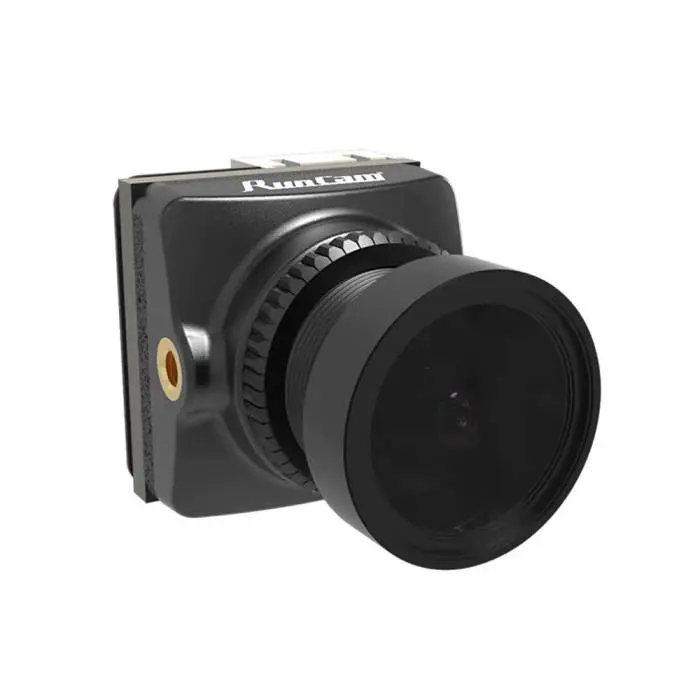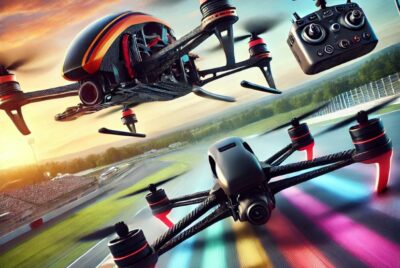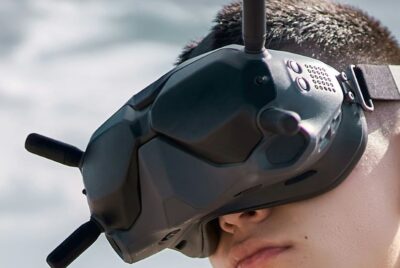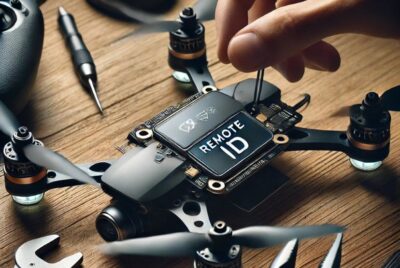FPV Drone Cameras-Top 10 of 2024: Capturing the Skies in Style
Hey there! Some links on this page are affiliate links which means that, if you choose to make a purchase, I may earn a small commission at no extra cost to you. I greatly appreciate your support! Please see our Disclosure to learn more.
Introduction
Are you ready to take your drone flying to the next level? Choosing the right FPV (First Person View) drone camera is key to unlocking an immersive flying experience. Whether you’re a seasoned pro or a curious newbie, this guide will help you find the perfect eyes for your flying machine.
We’ve scoured the market to bring you the top 10 FPV drone cameras of 2024. From budget-friendly options to high-end powerhouses, we’ve got you covered. So, buckle up and get ready for a thrilling journey through the world of FPV cameras!
In this article, we’ll count down from number 10 to the cream of the crop. For each camera, we’ll dive into its key features, pros, cons, and why it earned its spot on our list. Let’s take off and explore these amazing pieces of tech!
10: Foxeer Razer Mini: The Budget-Friendly Flyer

Kicking off our list is the Foxeer Razer Mini, a pocket-sized powerhouse that won’t break the bank. Foxeer has made a name for itself in the FPV world, and this little camera shows why.
The Razer Mini boasts a crisp 1200TVL resolution and a wide 1.8mm lens. It’s perfect for pilots who want to capture every detail without lag. The low latency means you’ll see everything in real-time, essential for those tight turns and quick maneuvers.
What makes the Razer Mini shine is its reliability. It’s the trusty sidekick you want on your drone adventures. Sure, it might not have all the bells and whistles of pricier models, but it gets the job done with style.
Pros:
- Affordable price point
- Reliable performance
- Compact size fits most builds
Cons:
- Lacks some advanced features
- Image quality good, but not top-tier
Why it’s 10: The Foxeer Razer Mini is the perfect entry point FPV drone camera for budget-conscious pilots. It proves that you don’t need to spend a fortune to get a solid FPV experience. If you’re just starting out or building a practice rig, this camera is a fantastic choice.
9: Caddx Turbo Micro F2: The Reliable Mid-Ranger

Moving up the list, we have the Caddx Turbo Micro F2. Caddx has built a reputation for quality in the FPV community, and this camera lives up to the hype.
The Turbo Micro F2 comes equipped with a 1200TVL resolution sensor and ultra-low latency. It also features Wide Dynamic Range (WDR), which helps balance bright skies and shadowy areas. This means you’ll get clear images even when flying through tricky lighting conditions.
What sets this camera apart is its balance of price and performance. It’s a step up from entry-level options without venturing into premium territory. The image quality is crisp, and the response time is snappy.
Pros:
- Great balance of price and performance
- Wide Dynamic Range for balanced images
- Ultra-low latency for responsive flying
Cons:
- Newer models offer slightly better features
- Some users report occasional firmware issues
Why it’s 9: The Caddx Turbo Micro F2 holds its ground in 2024 as a reliable mid-tier FPV drone camera option. It’s perfect for pilots who want to upgrade from their first camera without breaking the bank. Its solid performance and reasonable price make it a popular choice among hobbyists and semi-pros alike.
8: RunCam Phoenix 2: The Night Owl’s Delight

As we climb higher, we encounter the RunCam Phoenix 2. RunCam has always focused on image quality, and this camera is no exception. It’s a favorite among pilots who love to push the boundaries of when and where they can fly.
The Phoenix 2 features a 1000TVL resolution sensor with exceptional low-light performance. It’s like giving your drone night vision goggles! The color rendition is also top-notch, ensuring your footage looks vibrant and true-to-life.
What really makes the Phoenix 2 stand out is its ability to handle challenging lighting conditions. Whether you’re flying at dusk or dawn, this camera will help you navigate with confidence.
Pros:
- Excellent low-light performance
- Superior color accuracy
- Low latency for responsive control
Cons:
- Some users might prefer higher resolution
- Slightly bulkier than some competitors
Why it’s 8: The RunCam Phoenix 2 earns its spot for its specialized skills. If you’re a night flying enthusiast or often find yourself navigating through shadows, this FPV drone camera is your best friend. It proves that sometimes, specialized features can outweigh raw specs.
7: Foxeer Predator V5: The Jack of All Trades

Climbing higher, we find the Foxeer Predator V5. This camera is Foxeer’s answer to pilots who want it all. It’s a versatile performer that adapts to various flying styles and conditions.
The Predator V5 boasts a 1000TVL resolution sensor and ultra-low latency. What sets it apart is its switchable aspect ratio and multiple image settings. You can fine-tune your view to match your flying style or the specific challenges of your flight path.
This camera shines in its ability to handle different scenarios. Whether you’re racing through a course or capturing cinematic footage, the Predator V5 has you covered.
Pros:
- Versatile with multiple image settings
- Switchable aspect ratio
- Sharp image quality
Cons:
- Color profile might not suit everyone’s taste
- Menu system can be complex for beginners
Why it’s 7: The Foxeer Predator V5 lands at number 7 for its adaptability. It’s the Swiss Army knife of FPV drone cameras, ready to tackle whatever you throw at it. For pilots who enjoy variety in their flying, this camera is a top contender.
6: Caddx Ratel 2: The Freestyle Favorite

As we reach the halfway point, we encounter the Caddx Ratel 2. This camera has earned a special place in the hearts of freestyle and cinematic pilots.
The Ratel 2 comes equipped with a 1200TVL resolution sensor and low latency performance. It excels in low-light conditions, making it perfect for those golden hour flights. The build quality is also noteworthy, designed to withstand the knocks and bumps of aggressive flying.
What makes the Ratel 2 stand out is its ability to capture smooth, fluid footage. It’s like having a steady hand on your controls, even when you’re pulling off wild maneuvers.
Pros:
- Excellent for freestyle and cinematic flying
- Great low-light performance
- Durable build quality
Cons:
- Not the lightest option available
- Some users find the default settings too sharp
Why it’s 6: The Caddx Ratel 2 secures the sixth spot for its versatility and reliability. It’s a favorite among pilots who push their drones to the limit, offering a perfect blend of image quality and durability. If you’re looking to take your freestyle game to the next level, this FPV drone camera deserves your attention.
5: RunCam HDZero Nano V3: The Micro Marvel

Breaking into the top five, we have the RunCam HD Zero Nano V3. This tiny titan proves that great things come in small packages. It’s a game-changer for micro drone enthusiasts and whoop pilots.
The Nano V3 features a 720@60fps 4:3 resolution sensor and ultra-low latency. But what really sets it apart is its size and weight. At just 2.2 grams, and featuring 14x16x14mm dimensions, this FPV drone camera is designed for easy integration and portability.
Despite its small size, the Nano V3 doesn’t skimp on image quality. It delivers clear, responsive video that helps you navigate tight spaces with ease.
Pros:
- Ultra-compact size and lightweight design
- Perfect for micro and whoop builds
- Surprisingly good image quality for its size
Cons:
- Lower resolution compared to larger cameras
- Limited customization options
Why it’s 5: The RunCam HD Zero Nano V3 earns its high ranking by dominating the micro camera niche. It’s the go-to choice for tiny builds where size and weight are critical. This camera proves that sometimes, less is more.
4: Caddx Nebula Pro: The HD Heavyweight

As we enter the top four, we meet the Caddx Nebula Pro. This camera marks our first entry into the world of HD FPV, and what an entry it is!
The Nebula Pro offers crisp 720p/60fps HD video with an impressively low latency of just 32ms. It’s fully compatible with DJI FPV systems, making it a favorite among digital FPV enthusiasts. The build quality is also top-notch, designed to withstand the rigors of intense flying.
What sets the Nebula Pro apart is its ability to deliver HD quality without sacrificing responsiveness. It’s like having your cake and eating it too!
Pros:
- HD video quality (720p/60fps)
- Low latency for an HD camera
- Excellent compatibility with DJI systems
Cons:
- Not the highest resolution in the HD market
- Requires specific system setup
Why it’s 4: The Caddx Nebula Pro secures fourth place for bringing HD quality to the FPV world. It’s the perfect choice for pilots ready to make the leap to digital FPV, especially those already invested in the DJI ecosystem.
3: Foxeer T-Rex: The Detail Devil

Breaking into the top three, we have the Foxeer T-Rex. This camera is all about crystal-clear clarity and razor-sharp details.
The T-Rex boasts an impressive 1500TVL resolution sensor, one of the highest in the analog FPV world. It also features low latency and a wide dynamic range. The build quality is robust, ready to handle whatever you throw at it.
What makes the T-Rex stand out is its ability to capture fine details. It’s like giving your drone eagle eyes, letting you spot obstacles and navigate with precision.
Pros:
- Exceptional image clarity and detail
- High 1500TVL resolution
- Durable construction
Cons:
- May be overkill for some casual users
- Slightly higher price point
Why it’s 3: The Foxeer T-Rex claims the third spot for its uncompromising focus on image quality. It’s the perfect choice for pilots who demand the absolute best in visual clarity. If you’re flying in complex environments or need to spot small details, this camera won’t let you down.
2: RunCam Eagle 3: The All-Rounder Ace

Just missing out on the top spot, we have the RunCam Eagle 3. This camera comes tantalizingly close to perfection, offering a blend of features that cater to almost every pilot’s needs.
The Eagle 3 features a 1200TVL resolution sensor with a switchable aspect ratio. It excels in both low-light conditions and bright daylight thanks to its wide dynamic range. The image quality is superb, with true-to-life colors and sharp details.
What sets the Eagle 3 apart is its versatility. It performs admirably in almost any situation, from high-speed racing to leisurely scenic flights.
Pros:
- Excellent image quality in various conditions
- Switchable aspect ratio for different needs
- Great low-light performance
Cons:
- Menu system can be complex for beginners
- Slightly larger than some competitors
Why it’s 2: The RunCam Eagle 3 secures the second spot for its near-perfect balance of features. It’s the camera that tries to do it all and largely succeeds. For pilots who want top-tier performance without specializing in one area, the Eagle 3 is hard to beat.
1: DJI O3 Air Unit Camera: The Crown Jewel

At the pinnacle of our list, we find the DJI O3 Air Unit Camera. This powerhouse represents the cutting edge of FPV technology in 2024.
The O3 Air Unit Camera delivers stunning 1080p/60fps HD video with ultra-low latency. It features built-in stabilization and a wide field of view, ensuring smooth and immersive flights. As part of the DJI FPV ecosystem, it offers unparalleled integration and ease of use.
What truly sets the O3 apart is its combination of image quality, responsiveness, and advanced features. It’s like strapping a high-end action camera to your drone, but with the speed and control FPV pilots demand.
Pros:
- Top-tier 1080p/60fps HD video quality
- Ultra-low latency for responsive control
- Built-in stabilization for smooth footage
Cons:
- Premium price point
- Requires specific system setup
Why it’s 1: The DJI O3 Air Unit Camera claims the top spot for pushing the boundaries of what’s possible in FPV. It offers the best overall package for pilots who want the ultimate flying experience. While it comes at a premium price, for many pilots, the quality and features justify the investment.
Conclusion
And there you have it, folks! Our rundown of the top 10 FPV drone cameras of 2024. From budget-friendly options to high-end powerhouses, we’ve covered the full spectrum of what’s available.
Remember, the best camera for you depends on your specific needs. Are you a beginner looking for a reliable starter? Check out the Foxeer Razer Mini or Caddx Turbo Micro SDR2. Night flying enthusiast? The RunCam Phoenix 2 might be your perfect match. Ready to dive into the world of HD FPV? The Caddx Nebula Pro or DJI O3 Air Unit have you covered.
No matter which camera you choose, each one on this list offers something special. They’re the eyes of your drone, your window into the exciting world of FPV flight. So pick your favorite, strap it to your quad, and take to the skies!
Remember to check out our other articles for more drone tips, drone racing regulations, tricks, and reviews. Happy flying!
FAQs
- Q: What’s the difference between analog and digital FPV cameras?
A: Analog cameras offer lower latency and cost less, while digital cameras provide higher image quality and features like HD video. Digital systems often require specific compatible equipment. - Q: How important is camera latency for FPV flying?
A: Latency is crucial for FPV flying. Lower latency (typically under 40ms) ensures more responsive control, which is essential for racing and freestyle flying. - Q: Can I use any FPV camera with my existing drone setup?
A: Not always. Compatibility depends on your video transmitter, goggles, and overall system. Analog cameras are more universally compatible, while digital systems often require matching components. - Q: What does TVL mean in FPV camera specifications?
A: TVL stands for TV Lines, a measure of resolution in analog cameras. Higher TVL numbers (like 1200TVL) indicate sharper image quality. - Q: Are higher resolution FPV cameras always better?
A: Not necessarily. While higher resolution offers more detail, it can increase latency and require more bandwidth. The best choice depends on your flying style and system capabilities.




